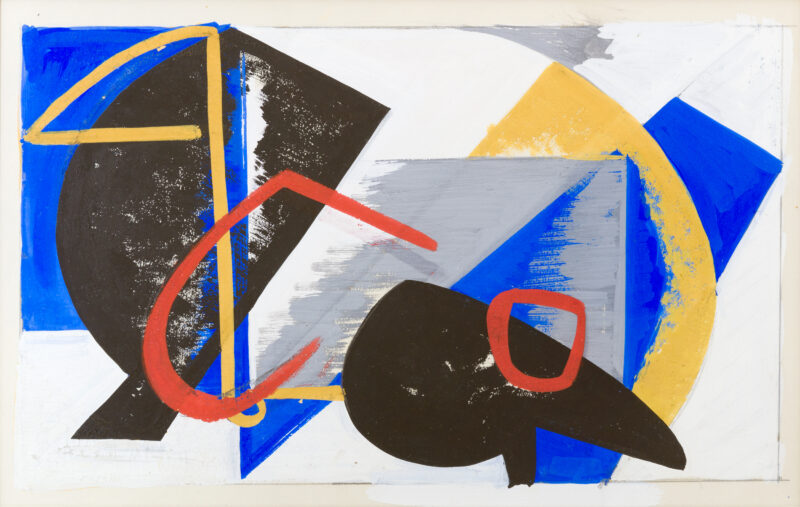
The Ogunquit Museum of American Art (OMAA) will present the first exhibition in Maine of work by the artist Lee Krasner (1908-1984). On view Aug. 1 through Nov. 17, “Lee Krasner: Geometries of Expression” sheds light on the often-overlooked early career of Krasner and places her work within the context of her peers.
Born in Brooklyn, New York, to a Russian Orthodox Jewish family, Krasner pursued formal art training at several New York City institutions and also studied with the influential German abstract painter Hans Hofmann. In the 1930s, she supported herself by working for the WPA’s Federal Art Project, gaining valuable experience working on a larger scale. Krasner was an active member of the Artists Union and American Abstract Artists, maintaining her commitment to activism throughout her life. Krasner married the painter Jackson Pollock in 1945. Though often overshadowed by Pollock, Krasner was an established abstract artist before they met. Krasner’s influence is often credited with helping Pollock refine his technique. She introduced Pollock to key figures in the New York art scene, including Willem de Kooning and critic Clement Greenberg. After Pollock’s death in a car accident in 1956, Krasner dedicated herself to preserving his legacy while continuing to develop her own artistic career. In 1965 she had a retrospective solo exhibition at the Whitechapel Gallery in London, later followed by a solo exhibition at the Whitney Museum of American Art in 1975. In 1978 Krasner finally took her rightful place alongside Jackson Pollock, Mark Rothko and others in the exhibition “Abstract Expressionism: The Formative Years” at the Whitney Museum of American Art in New York City.
In the 1930s and early 1940s, Krasner rose to prominence as a dynamic voice within the vanguard circles of contemporary artists living and working in New York City. During a period fraught with socio-economic turmoil and political upheaval, the artist was politically active, taking part in lively debates at the Artists Union and protesting the Museum of Modern Art. Her network was far-reaching and animating, including relationships with European émigrés like Piet Mondrian and Hans Hofmann and organizations such as the American Abstract Artists Group.
“Geometries of Expression” brings to light Lee Krasner’s resilience and creativity in a challenging era for artists, especially women. As Devon Zimmerman, OMAA’s curator of modern and contemporary art, explains, “Krasner’s work during this moment of her career is a testament to her artistic prowess, but also a reflection of the relationships she forged with a network of artists, patrons, and critics that spanned all corners of the art world at the time. This exhibition aims to illuminate the centrality of Krasner in the advocacy and advancement of abstraction in the United States.”
Krasner’s serious engagement with abstraction began in 1937 when she enrolled in New York’s Hofmann School of the Fine Arts. From the late 1930s until her marriage to painter Jackson Pollock in 1945, she developed an artistic vocabulary that would be sustained throughout her career. Krasner’s exploration of geometric abstraction during this period was buoyed by her participation in organizations like the American Abstract Artists group and the Works Progress Administration, and relationships with many of the foremost practitioners of abstraction working in the United States.
“Geometries of Expression” is organized around four nodes of Krasner’s far-reaching network: her studies with the influential teacher Hans Hofmann, her work for the Works Progress Administration (WPA), her involvement in the American Abstract Artists (AAA) group, and her relationship with the circles around European émigré Piet Mondrian. Also included in the exhibition are works by fellow artists Charmion von Wiegand, Alice Trumbull Mason, Esphyr Slobodkina, Gertrude Greene, Mercedes Carles Matter, Balcomb Greene, Ilya Bolotowsky, Burgoyne Diller, Fritz Glarner, Hananiah Harari, Rupert D. Turnbull and Vaclav Vytlacil.
“Geometries of Expression” is co-curated by curator of modern and contemporary art Devon Zimmerman and guest curator Michele Wije.
Categories: exhibitions, gallery, openings, shows
Tags: art, museum, Ogunquit Museum of American Art

